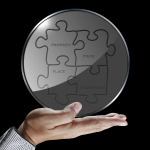There is no excuse now for marketers failing to communicate on a one-to-one basis – but here’s some how-to advice on leveraging data insights to make your communications dynamic.
One-to-one communication really works, says Tony Kemp. But make it ultra relevant to the individual. Old hat name-personalisation is vastly inadequate because it has failed to fully utilise your client data insights.
There is no excuse now for marketers failing to communicate one-to-one with their clients – with attention grabbing headlines, relevant images and offers and varying tone of voice, text size and contrast. Today’s marketing communications need to become dynamic, making the most of all of the personalisation opportunities that are now available.
Here are some tips:
- Consumers are increasingly demanding and expect a high degree of personalisation. Use whatever you know about your clients to reach out to them. Adding a name and address obviously gets your mail delivered, but marketers need to use data insights to create attention grabbing, colourful headlines, individualised to every customer to improve response rates.
- Identify with your customer; know who you are reaching out to – and show it. Information that we hold about our clients must be used to best effect to tailor the offers that we send to each client and also to avoid sending irrelevant communications which may be seen as ‘junk’. For example, if a vet wanted to reach out to dog owners with a dog food offer and to cat owners with, for example, a flu vaccine offer, then data flags can be used to select the right pet owners for the respective offers which can be produced – all inflight – in one campaign.
- Housekeep your data. Update your data regularly and avoid sloppy mistakes which just annoy consumers. Outsource the cleaning if necessary – as there is no excuse today for not utilising suppression files to delete ‘gone aways’ or for removing the recently deceased from your communications.
- Use specific images and photographs which will appeal to the recipient. For example, if your client has a young family, then include pictures of young families. If it’s a retired couple, then use shots of older individuals enjoying various activities in retirement, or if they are much older and possibly bereaved, then avoid images of couples and instead use groups of elderly people.

- More often than not, you should know your customer’s age or age group. So if, for example, they are aged over 55, it is essential to use larger print and greater contrast. Think about how the customer feels – for example, if you are offering a highly sensitive service such as laser eye surgery to a 55-year-old man who is struggling to read, don’t include images of a 22-year-old female wanting vision correction for driving.
Data personalisation tips: make the most of every opportunity for your message, such as birthdays
It takes some time to win customers and marketers have to work just as hard to retain them. Use your data to make the most of every opportunity to connect with your customers again and again. For example, add soft touches into your communication programme to send thank you, birthday or anniversary cards to mark their loyalty to your business. This will make your clients feel important and valued, and they will recommend you.
Make your communication dynamic. Use data insights for every client to produce bespoke communications with engaging headlines, relevant imagery and offers that fit each customer’s profile. Communicate intelligently in response to client concerns, in anticipation of a forthcoming event, on a particular anniversary – communications should be regular, relevant and engaging.
Read also:
Rewards and incentives: are they enticing the modern savvy shopper?
Retentionomics – marketers ‘awesome at winning customers’; keeping them? ‘not so sure’







Leave your thoughts